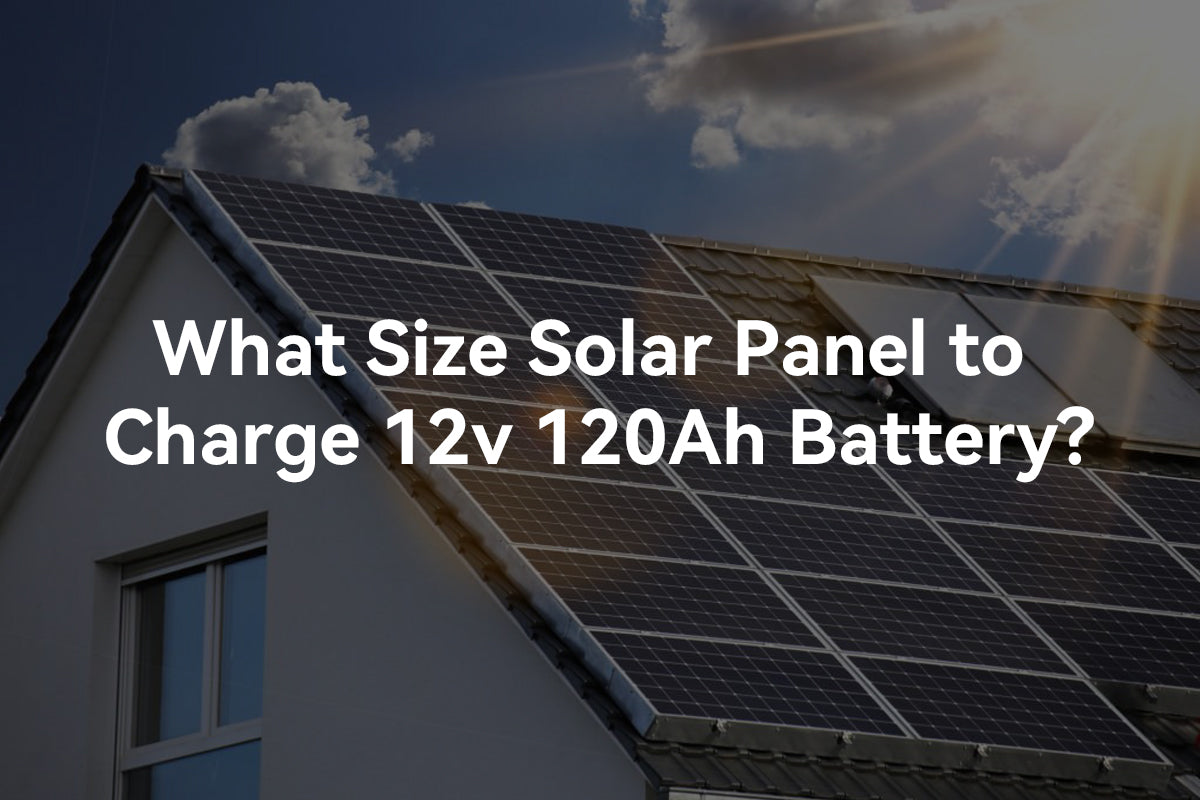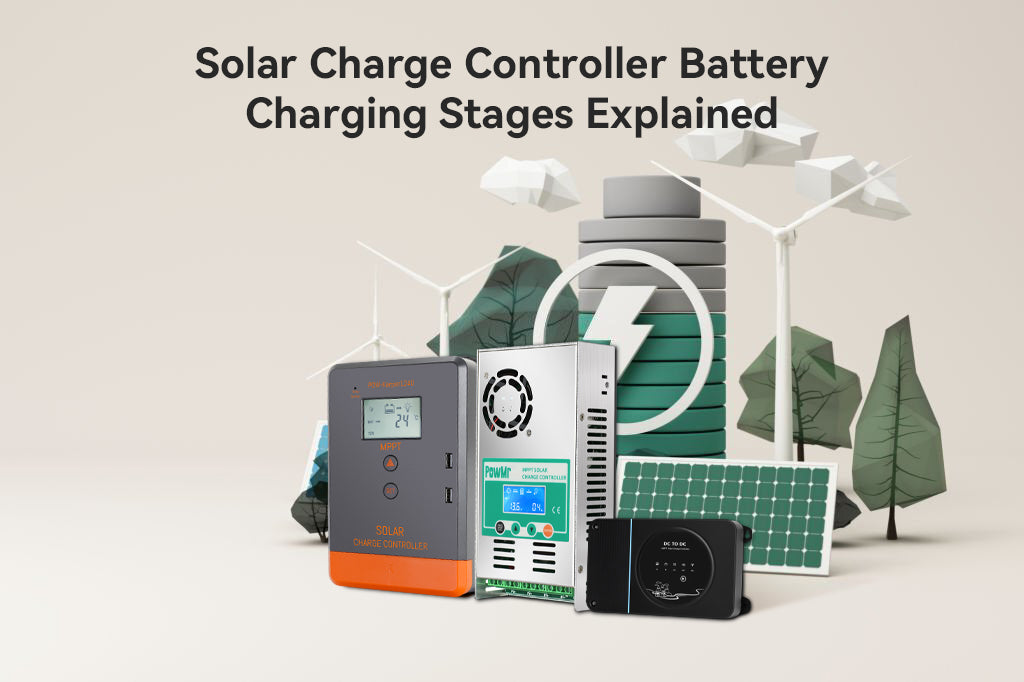With the increasing popularity of solar energy, solar panels play a crucial role in converting sunlight into electricity. However, determining the appropriate size of a solar panel to charge a battery can be a challenging task for novice.
It requires considering factors such as battery voltage and capacity, charging current, charging time, solar panel efficiency, and geographical location.
By understanding these variables and making accurate calculations, you can ensure efficient and effective charging of your battery. In this article, we will explore the factors to consider and provide guidelines for calculating and selecting the right solar panel size for your battery charging needs.
- What size panel you need to charge a battery?
- Battery Voltage and Capacity: How many watt hour in a solar battery?
- Charging time: How many time you want to charge the battery?
- How many solar panels do I need to charge a 12V battery?
- How to dimension the power of solar panels using irradiation?
- How to Charge a Battery from a Solar Panel?
What size panel you need to charge a battery
Battery Voltage and Capacity: How many watt hour in a solar battery?
Before determining the size of the solar panel, it is essential to understand the voltage and capacity of the battery.
One crucial factor to consider is the Ampere-hour (Ah) rating, which represents the capacity of a battery to store electrical energy.
Another factor is the voltage of the battery, here we take 12 volts solar battery as example.
To convert the amp-hour (Ah) of a solar battery to watt-hour (Wh), you need to multiply the voltage (V) by the Ampere-hour (Ah) rating. The formula is as follows:
- Watt-hour (Wh) = Voltage (V) x Ampere-hour (Ah)
Now, let's calculate the watt-hour capacity for a 12V 100Ah battery and a 12V 120Ah battery
- For a 12V 100Ah battery: Watt-hour (Wh) = 12V x 100Ah = 1200Wh
Therefore, the 12V 100Ah battery has a watt-hour capacity of 1200Wh.
- For a 12V 120Ah battery: Watt-hour (Wh) = 12V x 120Ah = 1440Wh
Thus, the 12V 120Ah battery has a watt-hour capacity of 1440Wh.
Charging time: How many time you want to charge the battery
Next, you need to consider the charging time, in other words, how fast do you need the battery charged.
To determine the size of the solar panel needed to charge a battery within a specific time frame, you need to consider the charging time, watt-hour capacity of the battery and solar panel efficiency. The third factor will be elaborated on in the upcoming section of the article.
Now, let's assume you want to fully charge a 12V 100Ah and 12v 120Ah battery in 8 hours. In this case, you need to calculate the watt-hour (Wh) input required to charge the battery within the desired time frame.
- Watt-hour input = Watt-hour capacity / Charging time
For the 12V 100Ah battery with a watt-hour capacity of 1200Wh and an 8-hour charging time:
- Watt-hour input = 1200Wh / 8h = 150W
For the 12V 120Ah battery with a watt-hour capacity of 1440Wh and an 8-hour charging time:
- Watt-hour input = 1440Wh / 8h = 180W
Therefore, you would need a solar panel with an output of at least 150 watts to charge the 12V 100Ah battery and 180watts to charge 12v 120Ah battery within 8 hours.
Note:
It's important to note that this calculation assumes 100% charging efficiency, which is not always achievable in practice. To account for losses and variations in sunlight conditions, it is recommended to add a safety margin of around 10-25% to the calculated wattage.
Additionally, it's important to consider other factors such as the geographical location, available sunlight, and the number of peak sun hours in a day to accurately size the solar panel system.
How many solar panels do I need to charge a 12V battery?
When there are no solar panels available that match the calculated power specifications, you can determine the number of solar panels needed based on a specific power rating, taking into account the efficiency of the solar panels.
Let's continue with the example of charging a 12v 100Ah and 12V 100Ah battery and 12v 120Ah within 8 hours. If you have 100W solar panels available, you can calculate the number of panels required as follows:
- Number of Panels = (Watt-hour input / Solar Panel Wattage) / Solar Panel Efficiency
For 12v 100Ah battery, you need 8 panels, rounding up 7.5 to the nearest whole number.
- Number of Panels = (150W / 100W) / 0.20 = 1.5 / 0.20 = 7.5 panels:
For 12v 120Ah battery, you need 9 panels:
- Number of Panels = (180W / 100W) / 0.20 = 1.8 / 0.20 = 9 panels
Therefore, in situations where there are no solar panels available that meet the calculated power specifications, you can calculate the number of solar panels needed based on a specific power rating and the efficiency of the solar panels.
It's also worth considering practical factors such as available space and installation constraints. Consulting with a solar professional can help determine the optimal number and configuration of solar panels for charging your specific 12V battery.
How to dimension the power of solar panels using irradiation?
To calculate the required size of solar panels using irradiation and peak hours, follow these steps.
- Determine the solar irradiation value for your location, which represents the amount of solar energy received per square meter per day.
- Determine the desired daily energy output from the solar panels.
- Consider the efficiency of the solar panels, which is assumed to be 20.8% in this case.
- Calculate: Required panel power = Desired daily energy output / (Solar irradiation value * Panel efficiency * Peak hours)
- Calculate the number of solar panels required following the second part of the article
Here's a table showing examples of required panel power for different countries, assuming a 450W solar panel with an efficiency of 20.8%:
|
Country |
Solar Irradiation (kWh/m²/day) |
Peak Hours |
Desired Daily Energy Output (kWh) |
Required Panel Power (W) |
|
USA |
4.5 |
4 |
12 |
1350 |
|
Germany |
3.5 |
3 |
8 |
634 |
|
Italy |
4.7 |
5 |
10 |
361 |
|
Spain |
5.2 |
6 |
15 |
365 |
|
Philippines |
4.2 |
4 |
12 |
684 |
How to Charge a Battery from a Solar Panel
Do I need to use a solar charge controller?
When charging a battery with a solar panel, it is important to consider the use of a solar charge controller. A charge controller regulates the flow of electricity from the solar panel to the battery, preventing overcharging or damage.
MPPT vs. PWM: Which Is Best?
There are two common types of solar charge controllers: Maximum Power Point Tracking (MPPT) and Pulse-Width Modulation (PWM).
MPPT controllers are more efficient and suitable for larger solar systems, while PWM controllers are simpler and cost-effective for smaller systems. The choice depends on your specific requirements and budget.
Steps to Charging a Battery with a Solar Panel
Here are the general steps to follow when charging a battery with a solar panel:
- Ensure the solar panel is correctly positioned to receive maximum sunlight.
- Connect the solar panel to the charge controller.
- Connect the charge controller to the battery.
- Monitor the charging process and ensure the battery is not overcharged.
How to Check If the Solar Panel Is Charging the Battery
To determine if the solar panel is charging the battery, you can use a multimeter to measure the voltage at the battery terminals. If the voltage increases over time, it indicates that the solar panel is successfully charging the battery.



